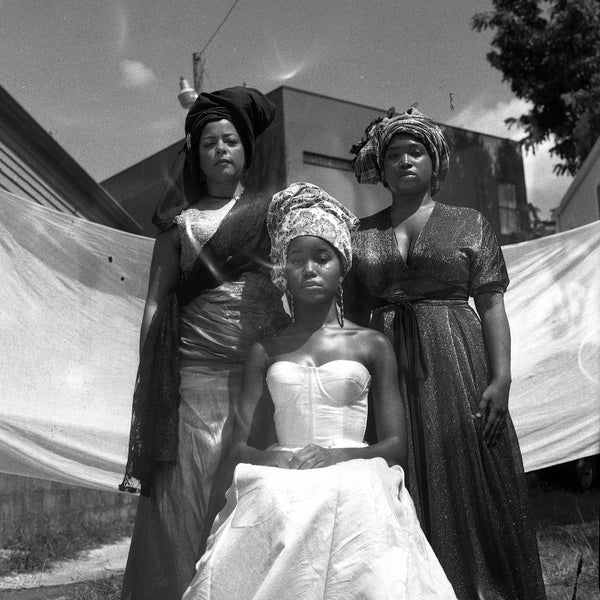Born in 1992 in London, Juliana Kasumu is a photographer with a focus on exploring the contemporary significance of cultural traditions from West Africa. Using conscious imagery to highlight the interconnectivity of women, culture and fashion, her subject matter is chosen based on a quest for personal knowledge concerning issues related to Africa and its Diaspora. Photographs by Juliana Kasumu have been exhibited for the use of raising awareness to less spoken narratives by women of color.
After receiving a bachelor’s degree in Visual Communication from Birmingham City University, Kasumu created an on-going series exploring traditional hair statements within the Yoruba tribe in West Africa. She is committed to researching and sharing ideas that promote West African culture through photography, publications and public programming.

In her most recent body of work, From Moussor to Tignon, Kasumu further expands on her cultural investigations from behind the lens. Throughout history, head-ties have been worn by women to highlight critical elements -culture, class, status- of one’s personal identity. From enslaved servants to wealthy entrepreneurs, a fundamental symbol of womanhood has been the notorious head wrap. By tracing the origins of this global phenomenon, Kasumu presents influential connections between Creoles of color in New Orleans, LA and signers in Senegal, West Africa as iconic leaders of the head wrap movement.
Kasumu depicts the response of women to Governor Esteban Miró’s, Bando de Buen Gobierno (Edict for Good Government), introduced to New Orleans in 1786. This oppressive tactic stated that “gens de couleur” (free women of mixed race) shall cover their heads in public to distinguish themselves from white women. Such a proposition put at the forefront an array of societal issues -race, marriage, genealogy- and ultimately presented women of color the stage for a satirical protest.

As decreed, women did in fact cover their heads, limiting the cultural visibility of entrancing hairstyles. However, intricate methods of head wrapping combined with foreign embellishments were astutely adapted instead, giving rise to the present day exoticism of the head-tie. In this photo-essay, Kasumu attributes the inspiration of such head wrapping techniques found in New Orleans to the cultural exchange between West Africa and the West Indies during the 18th century.






